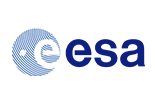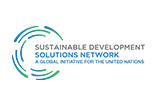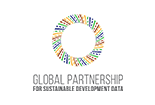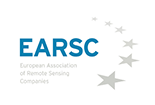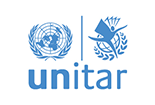Updates from the First Session of the UN-Habitat Assembly
More than 3000 participants representing member states, United Nations Agencies, local government authorities and non-state actors including civil society, youth and women group, the private sector and the academia attended the first session of the UN-Habitat Assembly in Nairobi, Kenya, between 27th and 31st May, 2019.
UN-Habitat assemblies are mostly dominated by political and governance discussions that focus on how to work together as a global community to advance sustainable urban development. This is in contract to the World Urban Forums which are dominated by technical discussions, knowledge and experience sharing among partners and countries[1]. Being the very first UN-Habitat assembly, the organizing committee agreed to open it up for sessions that include technical and knowledge sharing discussions that can help member states move forward in implementing sustainable urban development.
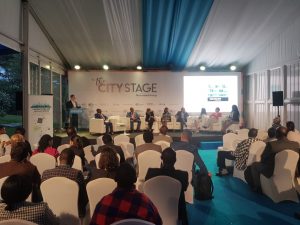
In line with the theme of the assembly, “Innovation for Better Quality of Life in Cities and Communities” and the sub theme, “Accelerated implementation of the New Urban Agenda towards achievement of the Sustainable Development Goals”, several sessions discussed how Earth Observation (EO) and Geospatial Information (GI) technologies can support and enhance urban SDG monitoring and implementation within countries and cities. During these sessions, UN-Habitat and partners from various global and regional agencies shared experiences on how emerging spatial technologies/innovations have been used to enhance the understanding of urban systems and their functionality, and in turn to support data and information driven decision making and policy formulation processes.
For example the Global Urban Observatory (Statistics) Unit of UN-Habitat shared experiences during one session on the integration and use of Geospatial technologies for slum mapping, while another session covered in general, how Earth Observations (EO) and Geospatial Information (GI) technologies can be leveraged for monitoring and reporting of three SDG 11 indicators – 11.3.1, 11.2.1 and 11.7.1. During one of the main events on EO, sessions focused on the use of EO and GI in policy development and implementation as well as how global, regional, national and municipal-wide institutions are using spatial information to guide development. Some of the participants in these EO & GI events included UN-Habitat, GEO secretariat, and the Global Partnership for Sustainable Development Data (GPSDD), University of Twente, African Population and Health Research Centre (APHRC), University of Warwick, European Commission-Joint Research Centre, Worldpop/ Flowminder, national and local government representatives, among others.
For many participants, the concept of regional data cubes, presented under the lenses of the Africa Regional Data Cube, was hailed as a major innovation that significantly simplifies the processes of multi-temporal Earth Observation data access and analysis, helping produce data across indicators. The breadth and depth of emerging partnerships between UN custodian agencies, specialized agencies and organizations working in the EO and GI, research institutions and academia, and cities and countries were also highlighted as offering major opportunities for both enhanced monitoring of the SDGs using emerging technologies and supporting decision processes towards the goal of leaving no one behind.
Participants who attended these technical sessions gained a greater understanding that good precision and high-resolution data is desirable in monitoring and planning for sustainable urbanization. Many partners are working collaboratively towards developing new approaches, data production methods, and openly sharing in support of the SDGs, with some of these tools showcased at the assembly. For example, UN-Habitat showcased data on three SDG 11 indicators (11.3.1, 11.2.1, 11.7.1) that were produced for a global sample of 500 cities spread across 92 countries, using a combination of EO & GI inputs and analyses and other existing open source datasets. This data, which was produced to showcase the maturity of EO and GI technologies and associated methodologies for data production for the SDGs, helped member states and city representatives (as well as other participants) to appreciate initial baseline performances by region, and understand how effective EO technologies are for accelerated monitoring. This is a key step to rapid uptake and commitment to sustained use of such technologies at the local and national levels across countries. On their part, UN-Habitat and its partners reiterated their commitment in supporting countries to embrace and develop geospatial capabilities that allow them build comprehensive baseline data for SDGs reporting. Several initiatives and consortiums are being set up for better coordination of partner activities in this line.
Better engagement for coordinated actions by the EO & GI community
At the Assembly, it was noted that the use of EO and GI is diverse, with applications to population estimation, support of development projects, and climate change monitoring among others. For example, one session highlighted that transportation and mobility industry has incorporated EO and GI in automating processes for cities and governments to make data-driven decisions. Based on the discussions, it is equally commendable that many countries are engaged and appreciate the benefits of geospatial technologies that enhance their understanding of the spatial distribution of urban phenomena as well as in decision making.

To better help member states to meet the SDGs demands, partners at the assembly urged the Geospatial and Earth Observation community to coordinate their efforts to achieve the desired synergy.
For example, while most methodologies for monitoring the urban agenda and the SDGs are already defined, the partners noted that standardized data structures and computation thresholds are desired for uniform reporting and data interoperability.
It also emerged that some components of spatial data application e.g– hardware, software, data and human capacity – are within reach for some countries but not for most countries. This also comes with the other challenges such as the quality of data, more so for countries in the global south. To address this challenge, partners and stakeholders called for partnerships in data generation and management as well as the inclusion of community-led/collected data in urban modelling. Countries were equally urged to appraise and pilot the new methodologies and tools, and report on their ease of use, scalability and quality of outputs.
The EO and GI community should continue engaging with countries especially the sub-national level to undertake coordinated and synergized activities that collectively promote evidence informed policies while continuing to improve the availability, access, understanding and use of Earth observations technologies for the benefit of society. Indeed, this call was reflected as a key outcome and resolution of the assembly, which captured in the ministerial declaration as: “Improve urban, village and rural monitoring, forecasting systems, territorial modeling ,planning tools, land use mapping and data management capacities, while ensuring and protecting privacy, so as to strengthen evidence-based policymaking and make progress towards establishing comparable international urban data and indicators.”
Twitter live recordings on EO & GI for Sustainable Development and Urban Monitoring:
https://twitter.com/i/broadcasts/1ynJORdevpXGR
https://twitter.com/i/broadcasts/1DXGyNLnPpVJM
https://twitter.com/i/broadcasts/1RDGlvLbkrdxL
https://twitter.com/i/broadcasts/1yoKMErgnPkKQ
https://twitter.com/i/broadcasts/1yoKMErgOAlKQ
https://twitter.com/i/broadcasts/1OyKApvRvEexb
https://twitter.com/i/broadcasts/1yoKMErgYnDKQ
More information
For more information please contact: Dr. Robert Ndugwa, Head/ Chief, Data and Statistics Unit, UN Habitat Headquarters. E-mail: robert.ndugwa[at]un.org.






